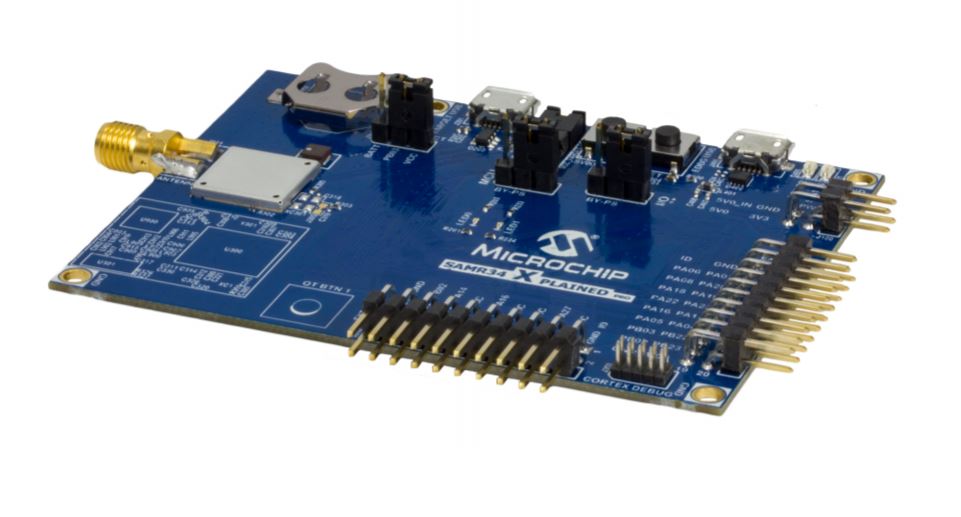I recently got myself a Microchip SAMR34 Pro Xplained board. I got mine from Digikey for $US99, including international shipping to New Zealand.
The dev board comprises of a ‘node section’, a debugger/programmer, a few Leds and Buttons, and a quite comprehensive set of tools to very accurately measure power consumption.
The SamR34 is a combination of a SAM L21 Microprocessor, and a Semtech SX1276 packaged into a 64 pin BGA ( 6x6mm ). It is well suited to a 4 layer PCB, ( i think 2 layers may be practically impossible )… You need to add a small handful of external components to it, to make it useful.
This has been my first use of a Cortex M0+, and Atmel Studio 7IDE. I do have quite a lot of experience with C, but there was a small learning curve to get over.
Chipsets like this fall over on the quality of the drivers/code and documentation. I’m very impressed with the drivers/code, but the documentation is a little lacking. Microchips demo is not a ‘simple’ app, and it took a solid days work to get through how it works, but once you do understand its framework, it is easy to add new features to it.
I have tested it with EU868 and AU915 and both work fine. There no reason to think it won’t’ work with other bands.
The Chips itself start at about $3.60 which makes them very attractive for developing applications with.
I’m intending on developing a module for internal use, and likely will make the design available open source, but at least for me, it is not worth pursuing as a ‘product’ as it will just be copied and replicated at a price point that does not make it worth time.

I appreciate that some will complain about the $99 price point. It is probably not targeted at the hobby tinkery market. Yes, you could probably piece it together cheaper from parts yourself. but if time is real money then I think its good value.
Of all the Lora development systems i’ve had a play with, this has been the best experience I’ve had. After a day of learning, I was able to piece together a simple application. I’d say if you are looking for somethign to play with, this is not a bad choice.
You can find docs for the Board at
https://www.microchip.com/DevelopmentTools/ProductDetails/DM320111
Disclaimer: I do not work for Microchip, have any financial interest in them, or was paid or even encouraged to offer this review. I saw an advert for the board and thought it was interesting and just bought it.
